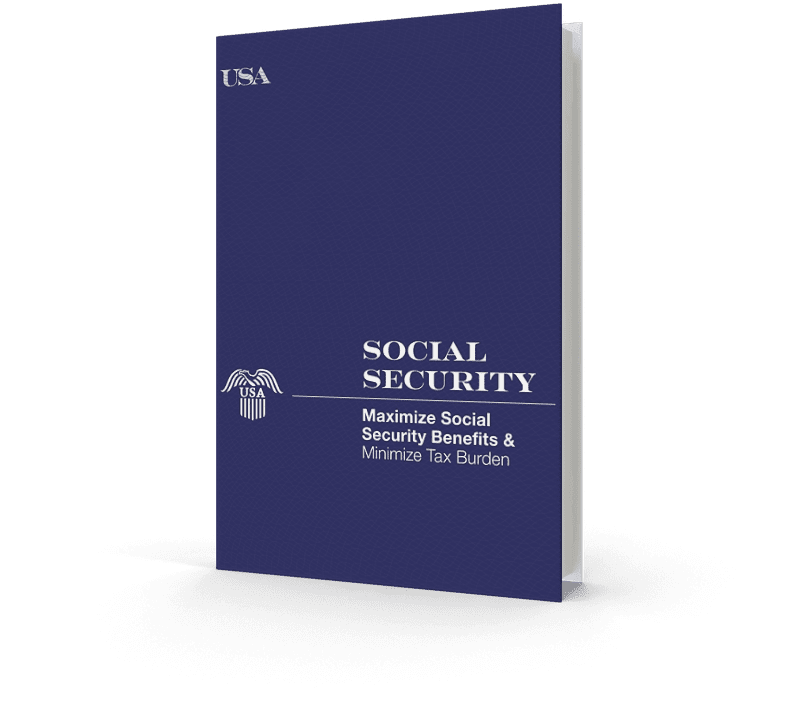Retirement Planning
People often think of retirement in abstract terms – far away, undefined, difficult to envision. As a result, more people are unprepared to retire than ever before – according to the Insured Retirement Institute’s 2019 study, 45 percent of baby boomers haven’t put a single penny toward their own retirement.


Prepare for Tomorrow, Make the Most of Today
Journalists and pundits seem to come out with a new study or soundbite every week declaring our country is in a “retirement crisis.”
But is there actually a nationwide “retirement crisis?” Whether or not there is a cumulative crisis among individuals preparing to eventually retire isn’t the point. The point is that your retirement is in your hands. While you may feel as though there is a crisis looming if you’re unprepared to retire, the truth is that it’s not too late to start those preparations through intentional planning.
That’s what we’re here for – to help you avoid your own personal retirement crisis by putting your financial plan into concrete terms using our five-step process. Want to find out how prepared you are for retirement right now?
Everyone Offers Retirement Planning These Days. What’s so Special About Our Approach?
We often compare retirement planning to trying to hit a moving target in the wind. The target is your retirement goals – essentially what you want to spend and pursue with your finances.
We often compare retirement planning to trying to hit a moving target in the wind. The target is your retirement goals – essentially what you want to spend and accomplish with your finances. The target is moving because you don’t know how long you will live – your retirement could last 5 years or 40. Then there is wind because things will change along the way.
Just like when NASA goes to the moon – and the countless calculations involved – we can’t expect to reach our end target by going in a straight line. Instead, we need to have a plan that addresses the risks along the way and can change as our retirement changes.
Any quality retirement income plan should start with a review of your goals or spending needs. Next, you should examine your current assets and retirement income sources like pensions, 401(k)s, and Social Security. We spend a lot of time helping you avoid potential mistakes when it comes to retirement planning.
All of us have had a flat tire on our bikes growing up. One of the great tricks for repairing the tire was to submerge the inner tube in water to see where the bubbles came from. Then you could find the leaks and patch accordingly.
Your retirement income plan may be sending up bubbles, too, whether around Social Security, taxes, healthcare or somewhere else – and these losses need to be patched up right away.
So, to help your retirement plan be more airtight, let’s look at a few of the common leaks.
Taxes
When it comes time to collect Social Security, remaining tax efficient is vital – up to 85% of your Social Security can be taxed. This is where having a trusted financial advisor is vital.
Each person’s financial journey is unique, meaning the right solution for you might not be the same as the next person. Your advisor can give you retirement income planning strategies for the best time to take benefits and how to stay within tax brackets that will minimize your penalty.
Paying too much in taxes on Social Security is one of those slow leaks that does a lot of damage over time.
Spousal Benefits
Missing out on spousal benefits is another trouble spot in retirement income planning.
Social Security was designed as a safety net for everyone, and conceived of in a time when most women didn’t work outside the home. Thus, spousal benefits were created to support the non-working spouse, even if the working spouse dies or there is a divorce.
Even if you haven’t paid into the system formally, you can receive a benefit that is half the amount of your spouse’s benefit. Because you supported someone who paid into the system, you should also receive benefits.
Spousal benefits also work for ex-spouses. If you were married to a Social Security contributor for 10 years or more, got divorced, and then did not remarry, you are eligible for spousal benefits. The same logic is at work here. At one point in your life, you supported someone who paid into the system and therefore you also receive benefits.
Inflation
Inflation is another concern in retirement finance. Your Social Security benefits have lost about 34% of their buying power since the year 2000, according to a 2018 study from the Senior Citizens League. You’re looking at 66 cents on the dollar compared to less than 20 years ago due to inflation.
The cost-of-living adjustment (COLA) on Social Security benefits is far behind inflation at any given point. Benefits payable in January 2020 increased 1.6%. That’s an average of about $33 a month – enough to take the grandkids to Denny’s (no dessert of course), but not enough to catch up with inflation.
Medicare and Social Security
Medicare and Social Security aren’t meant to be your full retirement plan, but they fill in gaps and free up other money you can use on living life.
Your Medicare premiums can double if you don’t take your Social Security in the right way, and there are chances you’re paying too much in taxes. An advisor can help you walk through the process and protect the money you need.
Risk Tolerance & Downside Protection
Finally, does your portfolio have enough downside protection? This is important for if the economy hits a bump like it did in 2008, when the market dropped 38%.
If you’d saved $2 million, you’d suddenly have $1,240,000, throwing off your whole plan.
The key is balance. Your investment strategies should reflect your risk tolerance profile and stage of life. That’s not to say a market downturn won’t hurt, but with the right downside protection you can be in much better shape.
You may already have enough saved for retirement and you want to be conservative with your investments to help make sure you keep that retirement nestegg. That’s where we begin in your retirement planning process – by looking at your comfortability with risk, where you’re at in correlation with your goals, and your long-term financial planning objectives.
By avoiding common mistakes and having your eye on the right target, our plan is to help you hit the mark – regardless of if it’s a moving target in the wind.


Maximize Social Security Benefits & Minimize Tax Burden
Electing to receive Social Security benefits at early retirement age may result in higher personal income taxes and a smaller nest egg, particularly for high net worth individuals. In this paper, we’ll shed light on common Social Security myths and provide options that, in certain instances, could decrease your payments to Uncle Sam and increase the financial legacy you leave.
